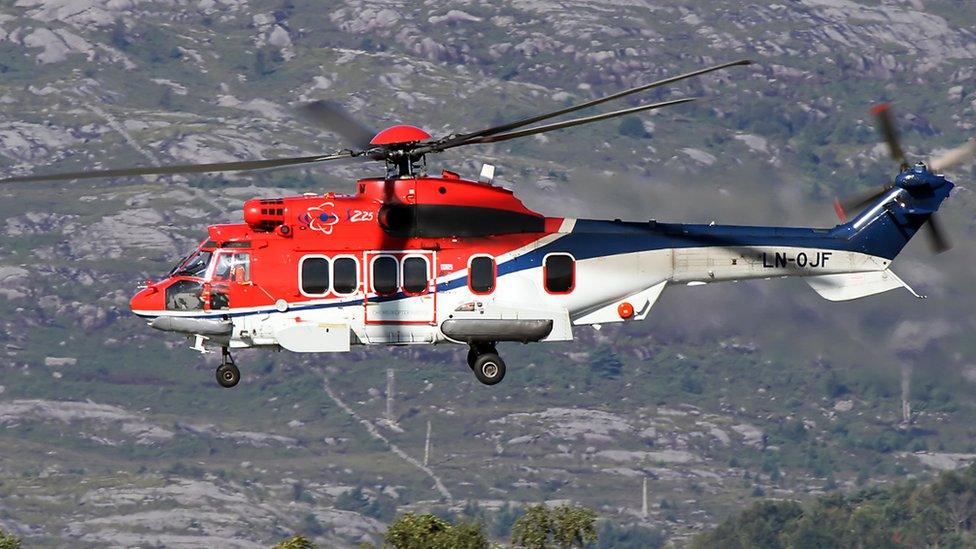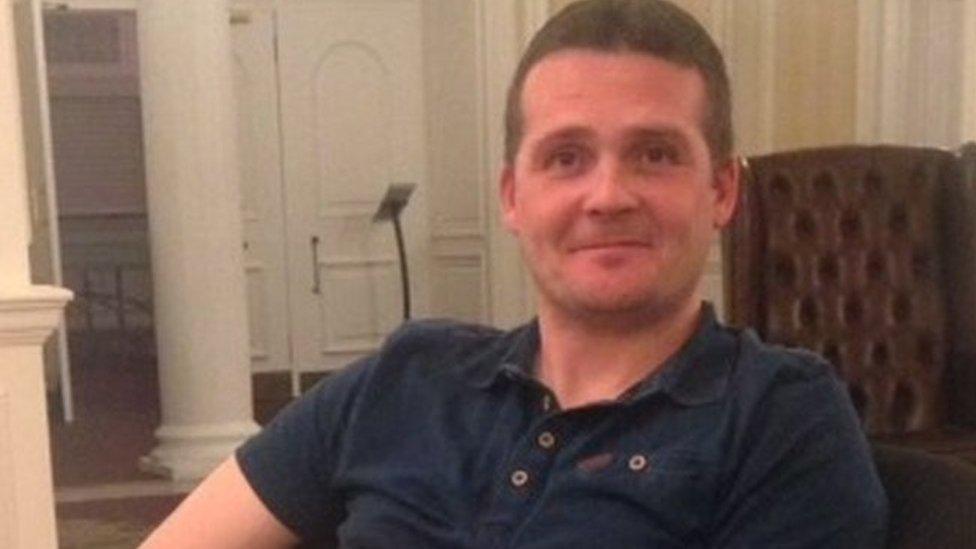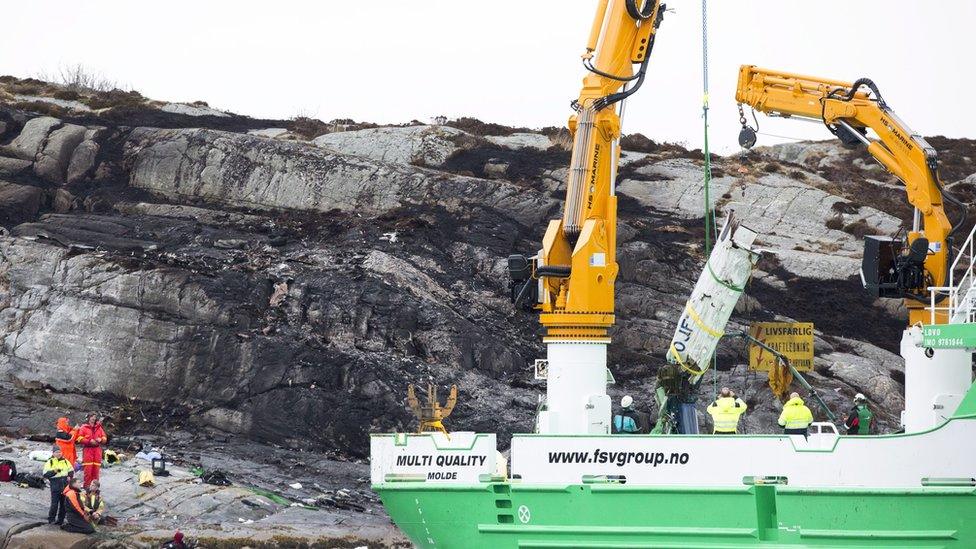'No explanation' on Norway helicopter crash gearbox detection system
- Published

The rotors detached from the helicopter
A report into a fatal helicopter crash off Norway has said there is no explanation as to why a detection system did not spot signs of damage to the gearbox.
The Super Puma 225 came down near the island of Turoey, near Bergen, while it was returning from an oil field.
Iain Stuart 41, from Laurencekirk, Aberdeenshire, was one of 13 people who died in the crash last April.
The Accident Investigation Board Norway said the inquiry was continuing.

Iain Stuart died in the crash
The AIBN said a fatigue fracture in the gearbox led to a chain of events which resulted in the rotor becoming detached from the fuselage, which then hit an island and burst into flames.
In 2009, a Super Puma crashed off Peterhead, leaving 16 men dead.
The latest report on the Norway incident, ahead of the first anniversary of the crash, said: "The AIBN will continue the investigation into how and why two similar catastrophic accidents could happen to near identical helicopters only seven years apart."
An inquiry into the 2009 North Sea crash concluded that the accident could have been prevented. All on board died when the Bond Super Puma came down.
Sheriff Principal Derek Pyle said after a fatal accident inquiry that precautions which might have avoided the deaths included following agreed procedures and communications.
Friday's AIBN report said many people witnessed last year's crash, external.
They included a couple with a four-year-old child who were crossing a nearby bridge on foot when they heard the helicopter.
'Explosion in sky'
It said: "A loud bang was then heard from the helicopter and the rotor detached. The husband stopped, whereas his wife and child continued walking.
"The helicopter continued virtually straight above the bridge and the husband could see that it was yawing as it moved through the air.
"He saw dark smoke coming from the helicopter as it continued until striking the island to their southeast. The rotor came straight towards the bridge and was perceived as dangerous until it suddenly changed direction and continued north.
"Parts fell down around them, and the wife and child hurried toward the end of the bridge. They heard parts hitting rock and falling into the sea."

The Super Puma helicopter crashed a year ago
Another person saw the helicopter approaching before he heard a metallic sound and the rotor detached.
He described it as an "explosion in the sky".
The helicopter then fell to the ground and burst into flames.
'Full support'
Super Puma manufacturer Airbus said the investigation showed there were mechanical similarities between last year's accident and the one seven years ago, which they were not aware of at the time of the Norwegian crash.
Airbus said it had now taken protective measures that it could not do after the earlier crash based on the knowledge and evidence available at the time, and also because significant parts from that accident were never recovered.
The European Aviation Safety Agency (EASA) said: "While the accident investigation is not complete, EASA continues to implement robust and proven certification processes taking into account all available information.
"EASA will continue to provide its full support to the ongoing investigation until the cause of the accident will be found."
A CHC Helicopter spokesman said: "The report confirms the progress made to date in establishing a definitive root cause. We remain fully committed to supporting the AIBN's ongoing investigation.
"As we mark the first anniversary of the tragic accident in Turøy, our thoughts remain with the families and friends of those who were lost.
"We continue to comply fully with all guidance issued by the relevant authorities regarding the EC225 and the AS332L2."
He added: "In both Norway and the UK, the regulators continue to have in place operational directives that effectively prohibits the use of these two models. Our global position mirrors this approach for now.
"We, along with other operators, continue to review this position as the output from the investigations dictate."
- Published27 February 2017

- Published28 June 2016

- Published1 June 2016

- Published13 May 2016

- Published1 May 2016

- Published13 March 2014
